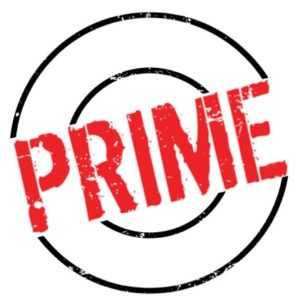by Dr. Ken Broda Bahm:

The simplest way to think about persuasion is as a transaction: You step up and make your best pitch, and then your target audience either accepts it or doesn’t. The conversational way of talking about whether our audience “buys what we’re selling” reinforces that view. But the more you think about persuasion, the more you think about factors that lie outside of that simple transfer. Fundamentally, I would say it is less like retail and more like farming. And in farming, you don’t just need a seed, you need good conditions, and you need to prepare the soil before you plant that seed.
In the study of persuasion, that act of preparing the soil is called “priming.” In short, priming means that earlier thoughts and messages help to determine the reactions your audience will have to later messages. If I ask you about food, and then change the subject and ask you to name something yellow, what you name will probably be a banana and not a taxicab. That’s priming. Some recent research shows the power this can have in courtroom communication. For example, a study of a Texas law shows that the practice of asking jurors to voluntarily donate to a crime victim’s fund biases the jury’s decision-making, making some jurors significantly more likely to convict. Other research shows that, after being primed to think about their own mortality, individuals are less likely to be certain of a suspect’s guilt, and less likely to reach a unanimous verdict. Another study shows that, when evidence comes in the form of audio recordings, providing a transcript, or even just telling jurors that the audio on a recording has been “enhanced” can prime them to “hear” things on the tape that would otherwise be unintelligible. Focusing on the broader concept of what sets the stage for persuasion, this post will look at three stages in the trial process where attorneys should think about priming.
Prime Your Witness Examination
Experienced questioners understand what I’ll call “The Chain,” or the way that earlier answers can set the stage for later answers. That is why they’ll ask a series of “Yes” questions, with the critically important “money” question coming at the end of that sequence. The expectation, and it often works, is that the witness, primed by their prior answers, will feel a push to continue to give the same answer.
So when planning your examination outline, you might think of it as a two-step process. First, think of the central concession you are after, and second, ask yourself what conditions would make that concession more likely. For example, you want an executive to concede she didn’t fully read an employee’s performance evaluation, so you might start by asking about the number of employees she manages, the number of documents that cross her desk, the many demands on her time, etcetera, before asking whether she was able to take time out of all that to fully review this one evaluation.
Prime Your Voir Dire
The questioning in voir dire can have a very similar dynamic to that of witness examination, with prior answers predicting later answers. The difference, however, is that it is group questioning, so statements from individuals can end up priming the whole venire. A main goal of voir dire is, of course, to find out enough about the potential jurors that you can rationally and strategically use your challenges for cause and peremptory strikes. But you can’t ignore the priming effect of the discussion as a whole. I differ with some attorneys and consultants I have talked to who believe that voir dire should be entirely about putting “the bad stuff” (for you) on the table. It is critical to learn the bad stuff, but I also believe that there is a method of questioning (I call it, “the Pivot”) allowing you to learn who has unfavorable attitudes or experiences, while at the same time spending more of your time talking to those who are more likely to say things that prime jurors toward the more favorable side of your case. The basic idea is to learn the bad stuff, but talk more about the good stuff.
Prime Your Message
Ultimately, I believe that thinking about priming is a different way of thinking about persuasion. Lawyers standing before a jury and trying to verbally persuade them shouldn’t just identify their best arguments and put them out there as if they were writing a brief. Instead, they ought to think about how they’re preparing the soil. Sometimes that means taking your time, building the credibility of the main characters, telling the story, thinking about the surrounding context, or “frame,” that would make jurors most favorable to your message.
That is why, whenever I provide recommendations following a focus group or a mock trial, the centerpiece of those recommendations is a structure for opening statement, and more broadly, for witness order and the presentation of the case. I do that because the structure is not just about the orderly arrangement of points. Rather, the sequence is a big part of what persuades. That is why all of the steps of preparing the soil, and priming the audience, deserve very careful thought.
_____
Other Posts on Persuasion:
- Respect the Four Pillars of Persuasion
- See Persuasion as a Process (Toward a Unified Theory of Legal Persuasion)
- Use the ‘Persuasion Slide’